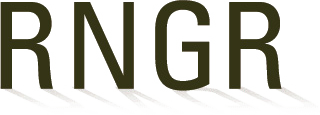
Aconogonon (davisiae)
|
Lee Riley Horticulturist USDA FS - Dorena Genetic Resource Center 34963 Shoreview Road Cottage Grove, Oregon 97424 541-915-7324 541-767-5709 (fax) lee.riley@usda.gov |
|
| Family Scientific Name: | Polygonaceae | ||
|---|---|---|---|
| Family Common Name: | Buckwheat Family | ||
| Scientific Name: | Aconogonon davisiae | ||
| Common Synonym: | Polygonum davisiae | ||
| Common Name: | Davis Knotweed | ||
| Species Code: | ACDA6 | ||
| Ecotype: | Crater Lake National Park, Oregon | ||
| General Distribution: | This species is shade tolerant and requires a minimum of roughly 41 inches (104 centimeters) of annual precipitation and a minimum soil depth of 2 inches (5 centimeters); however, it is considered low water tolerant. The optimal soil texture consists of loam or sandy loam material as well as decomposed plant material and bedrock. For soil pH, it ranges from slightly acidic to neutral. For elevation requirements, this species is found at a minimum of 4,165 feet (1270 meters). This species is frequently found on talus or pumice in volcanic fell fields and steep subalpine and alpine slopes and ridges. Geographically, this plant is considered native to the Western United States (California, Idaho, Oregon, and Washington). There are two varieties native to the United States and are often sympatric and intergrade. | ||
| Propagation Goal: | Plants | ||
| Propagation Method: | Seed | ||
| ProductType: | Container (plug) | ||
| Stock Type: | 262 ml (16 in3) container | ||
| Time To Grow: | 18 weeks | ||
| Target Specifications: | Stock Type: Container seedling Root System: Firm plug in container. | ||
| Pre-Planting Treatments: |
Seeds are placed into a 1% hydrogen peroxide (3:1 water/3% hydrogen peroxide) soak for 24 hours, rinsed, and placed in water for an additional 24 hours. Seeds are placed in fine mesh bags and layered in peat in a covered container. The containers are then placed in refrigeration at 1 to 3 °C for 70 days. It is very important to check seeds in peat weekly. If mold is evident, seeds should be treated with 1% hydrogen peroxide. |
||
| Growing Area Preparation/ Annual Practices for Perennial Crops: |
Greenhouse growing facility. Seeds are directly sown into containers. Seeds are lightly covered with nursery grit. Growing medium used is 40:20:20:20 peat:composted fir bark:perlite:pumice with Apex controlled release fertilizer (16N:5P2O5:11K2O with minors; 180-d release rate at 21C) at the rate of 1.5 gram Apex per 262 ml container. Seedlings remain in the greenhouse for 18 weeks, and are then moved to an outdoor growing area to induce dormancy. Average growing season of nursery is from early-March until early October. |
||
| Establishment Phase: | Germination can be slow and is often low depending on seed quality. It is usually complete in 3 weeks. | ||
| Length of Establishment Phase: | 3 weeks | ||
| Active Growth Phase: | Seedlings grow slowly. When secondary leaves have formed (approximately 3 weeks following germination), soluble fertilizer is applied. During the growing season, fertilization depends on weather. Soluble 20-9-20 NPK, 20-18-18 NPK, or 17-5-24 NPK at a range of 100 to 150 ppm is applied weekly throughout the growing season. | ||
| Length of Active Growth Phase: | 10 weeks | ||
| Hardening Phase: | No dry-down is done to induce dormancy. Seedlings will die back in late August and no live leaves are apparent when moved to an outdoor growing area in early-September. Roots are still somewhat active in September. | ||
| Length of Hardening Phase: | 3-4 weeks | ||
| Harvesting, Storage and Shipping: |
Harvest Date: Early October Storage Conditions: Seedlings are usually outplanted in fall to early winter. No storage except in outdoor growing area. |
||
| Other Comments: |
Perennial Herb, Subshrub Achene fruit Global Rank: G5 Bloom period: June to August Bloom- greenish to pinkish white Hardiness zones: 6a to 7b Stems- erect, glabrous, or pubescent Inflorescences- axillary, racemelike Leaves- ocrea reddish brown This species can grow up to 20 inches (50.8 centimeters) tall. |
||
| References: |
Calflora. 2024. Aconogonon davisiae. URL: https://www.calflora.org/app/taxon?crn=10752 (accessed 20 Nov 2024). Dorena Genetic Resource Center Propagation Records, unpublished. Giblin D, Knoke D. 2024. Aconogonon davisiae. Seattle (WA): Burke Herbarium Image Collection, University of Washington. URL: https://burkeherbarium.org/imagecollection/taxon.php?Taxon=Aconogonon%20davisiae (accessed 20 Nov 2024). Hinds HR, Freeman CC. 2020. Aconogonon davisiae. Flora of North America. URL: http://floranorthamerica.org/Aconogonon_davisiae (accessed 20 Nov 2024). Lady Bird Johnson Wildflower Center. 2018. Polygonum davisiae. URL: https://www.wildflower.org/plants/result.php?id_plant=PODA (accessed 20 Nov 2024). NatureServe Explorer. 2024. Polygonum davisiae. URL: https://explorer.natureserve.org/Taxon/ELEMENT_GLOBAL.2.137975/Polygonum_davisiae (accessed 20 Nov 2024). |
||
Citation:
Riley, Lee E.; Kurtz, Brenna. 2025. Propagation protocol for production of Container (plug) Aconogonon davisiae Plants 262 ml (16 in3) container; USDA FS - Dorena Genetic Resource Center Cottage Grove, Oregon. In: Native Plant Network. URL: https://NativePlantNetwork.org (accessed 2025/09/18). US Department of Agriculture, Forest Service, National Center for Reforestation, Nurseries, and Genetic Resources.



